 Today was the first snow fall in Toronto. It was really bad weather out there with snow and freezing rain. I had to get my new pair of boots out of the box which my wife got for me recently. I realized that the boots were tied together with two elastic bands. I tried to pull them apart but they were very strong and finally a pair of scissors came to my rescue. While I was struggling to remove the two elastic bands pulling the boots apart a beautiful simile came to my mind that was in one of the Buddhist suttas called Kotthita Sutta .
Today was the first snow fall in Toronto. It was really bad weather out there with snow and freezing rain. I had to get my new pair of boots out of the box which my wife got for me recently. I realized that the boots were tied together with two elastic bands. I tried to pull them apart but they were very strong and finally a pair of scissors came to my rescue. While I was struggling to remove the two elastic bands pulling the boots apart a beautiful simile came to my mind that was in one of the Buddhist suttas called Kotthita Sutta .

It is about the two cows, one black and the other white. These two cows were tied by a strong rope. They were both walking and pulling each other. It seemed like the white cow was pulling the black one, but at other times it seemed like the black cow was pulling the white one. The question was whether the white cow pulling black cow or the black cow pulling the white cow? The correct answer was, "neither." The rope is pulling both of them. If you cut the rope you can set them both free. Just the same way that I cut the rubber bands of my new boots!
Now what does it teach us? When you see a beautiful object, for example a beautiful car, is the eye attached to the car or the car attached to the eye? The correct answer here is the same as in the simile of two cows. It is neither. So what is this bond between the car and the eye? It is the craving (Taṇhā ), a conditioned concept of our mind. I like to consider this as some sort of mental "super glue." It is not physical bond like the rope as in the simile of the cows. However, if the eye was attached to the object or the object was attached to the eye there would be no chance of us getting enlightened or reaching the ultimate happiness (Nirvāṇa). In the same fashion the "super glue" or the craving will bind the other senses and their respective sensory stimuli. These are the ear to the sound, nose to the smell, tongue to the taste, body to the touch, mind to its mental objects. The six senses and how they work together were discussed in previous posts. (see below).
One might say,"who cares." "Let 'super glue' be there." For example if you see a beautiful car you might say "I like that car and I am going to buy it and enjoy it"! There is absolutely nothing wrong with that. The problem begins when things start to change. As we know all conditioned thing are impermanent, and are subject to change. If for example the car gets old, stolen or meets with an accident, suffering arises. The stronger the glue (attachment or craving) harder the pain and the suffering when things begin to change. This not only applies to objects but also to people or other things around you. You may have already experienced this numerous times in your life. Then you may ask, can I enjoy things and yet not get attached to it? It is almost impossible for us to do this, unless you are fully enlightened. Now the next question is how do we get there? Is it possible to be fully enlightened? Buddha very clearly told his disciples "I will not tell you anything that is not possible to achieve."
So what is enlightenment or Nirvāṇa? The most simple definition is "end of all cravings." This, Buddha said, is the ultimate happiness and end to all the suffering." So how do we get rid of this "super glue" or the craving which is preventing us achieving this goal? There is only one path to this. This is the Noble Eightfold Path, very clearly out lined by the Buddha. This is the path leading to full enlightenment. Now we have to find out how we can get rid of this craving. One way is to contemplate on how our six senses (eye, ear, nose, tongue,body and mind) work together with the external sense objects (object, sound, smell, taste, touch, mental object) and how and where this craving arise. Then you can contemplate on impermanence, suffering, and non-self of these six senses and their external sense objects (see the posts below). If this process is practiced diligently with mindfulness, it will help to slowly get rid of the cravings that arises in them. This is the basis of Vipassana meditation.
So is it possible to get rid of this "super glue" for ever? If you make the right effort and practice the Noble Eightfold Path, it will be within your reach. The fist step in this process is the right view(see the post below). Right view together with the right effort will help us travel this path (this will be discussed in detail in a later post) to reach this ultimate happiness. The beauty of Buddhist teachings is that you don't need to wait till you die to put an end to this suffering. You can reach the goal of ultimate happiness in this very life. One way of knowing that you are travelling that right path is when you get the sense of inner happiness and contentment. This is a good sign of melting of the "super glue!" Then results should be there at the end whether you like it or not, here and now, in this very life.
Related Suttas:
Kotthita Sutta
Salayatana-vibhanga Sutta -An Analysis of the Six Sense-media
Related previous posts:
Related Suttas:
Kotthita Sutta
Salayatana-vibhanga Sutta -An Analysis of the Six Sense-media
Related previous posts:
Why is this dog asking for more ? (post on sensory restrains)
"Stop worrying about your body so much...you are just renting it anyway" (Post on Anatta or Non-self)
Life is just like a "Morning Glory"- Mindfulness about life (Post on Impermanence)
Mindfulness About Life- "A Lesson From The Garden" (Post on Impermanence)
The Ultimate Psychotherapy -Through Buddhism (post on the six senses)
"Stop worrying about your body so much...you are just renting it anyway" (Post on Anatta or Non-self)
Life is just like a "Morning Glory"- Mindfulness about life (Post on Impermanence)
Mindfulness About Life- "A Lesson From The Garden" (Post on Impermanence)
The Ultimate Psychotherapy -Through Buddhism (post on the six senses)
" The True Weapons of Mass Destruction" - Greed, Hatred and Delusion (post on the right view)


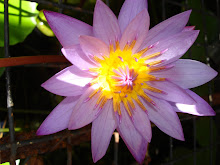












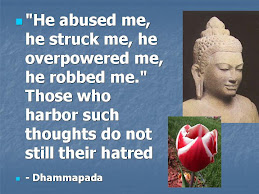

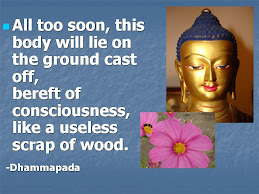
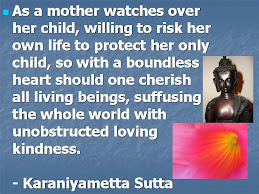
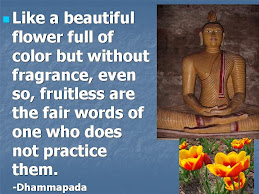
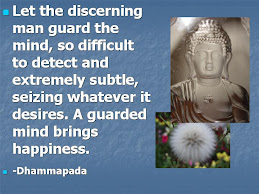

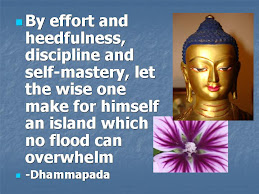

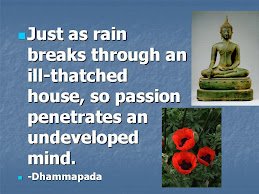

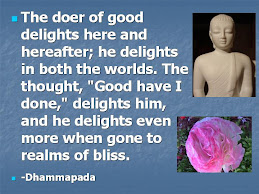
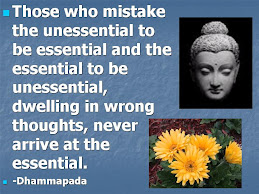

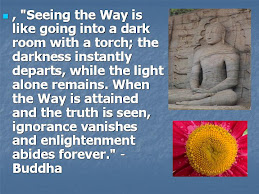

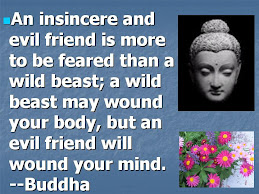


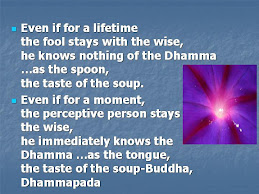


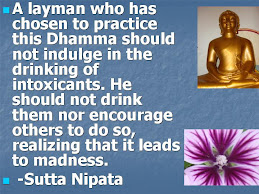
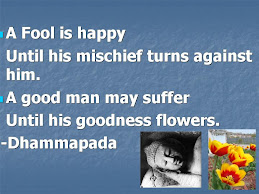
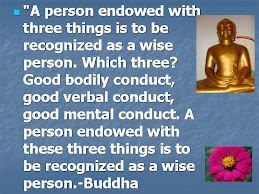

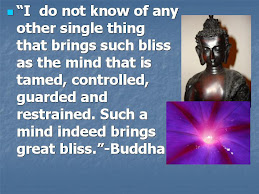
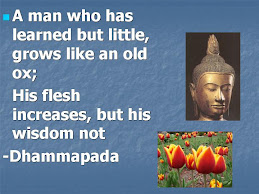
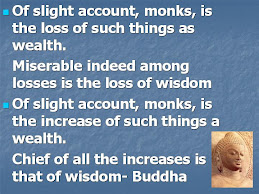
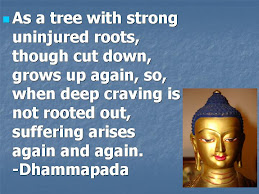
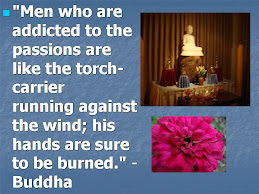


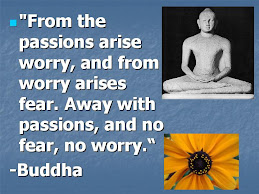
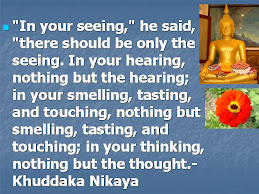




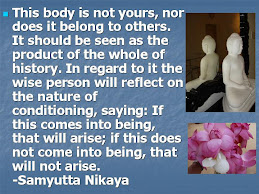

















2 comments:
Dear Dr. Piyal,
Thank you for the new post and I really enjoy reading your posts on some key teachings of the Buddha. The simile of cows from Sutta is well-likened to a pair of boots glued with super-glue. Once unglued the super-glue of Tanha from our hearts, the liberation from unease is possible for us right here in this life time.
May your heart be unglued !
Bhante Saranapala
Bhante Saranapala,
Thank you for taking the time to read my blog. I know you are a very busy person always dedicating your time for others, teaching Dhamma, conducting sutta and meditation classes. I appreciate and value your comments very much.
I think I found a "formula" to dissolve this "glue." I also realized that there is a LOT OF WORK to be done to completely get rid of it!
May the Noble Triple Gem Bless always and give you all the energy and courage to continue your excellent work.
Piyal
Post a Comment